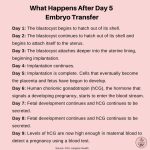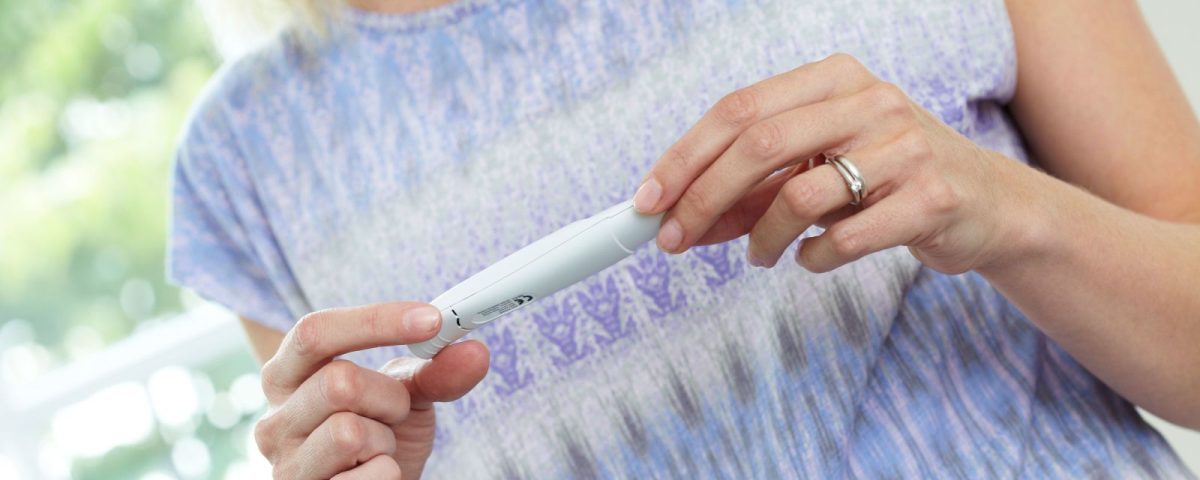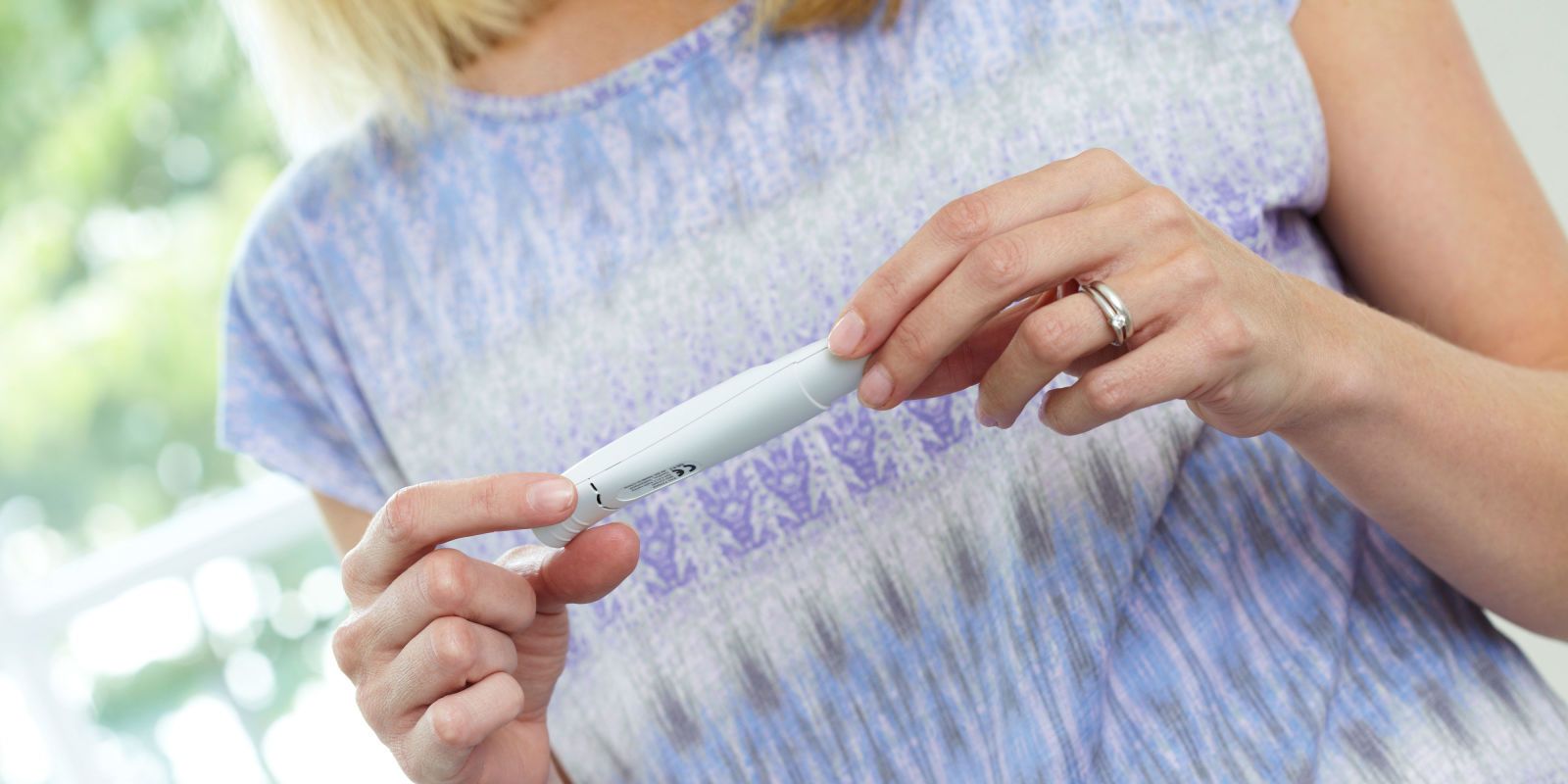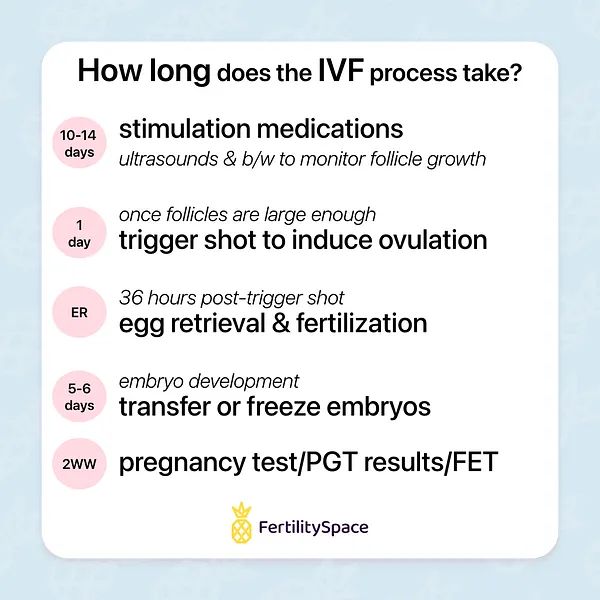
How Far Along Am I in IVF? Your Guide to Understanding Your Journey
April 11, 2025
What Happens After Egg Transfer in IVF: Your Complete Guide to the Journey Ahead
April 12, 2025How Long Does IVF Treatment Take? Your Complete Guide to the Timeline

How Long Does IVF Treatment Take? Your Complete Guide to the Timeline
In vitro fertilization (IVF) can feel like a big, mysterious journey when you’re first thinking about it. If you’re wondering how long it takes, you’re not alone—it’s one of the most common questions people have when they start exploring fertility options. The truth is, there’s no one-size-fits-all answer, but the process typically spans several weeks to a few months, depending on your unique situation. Whether you’re just curious or ready to dive in, this guide will walk you through every step, break down the timeline, and give you a clear picture of what to expect—plus some insider tips and fresh insights you won’t find everywhere else.
IVF isn’t a quick fix, but it’s a well-mapped-out process that’s helped millions of people build families. From the first doctor’s visit to that exciting pregnancy test, let’s explore how long each phase takes, what can speed things up or slow them down, and how you can make the most of this time. Ready? Let’s get started.

What Is IVF, Anyway?
Before we talk about how long IVF takes, it’s worth understanding what it is in simple terms. IVF is a fertility treatment where doctors take eggs from your ovaries, mix them with sperm in a lab, and then place the resulting embryo (or embryos) back into your uterus to grow into a baby. It’s like giving nature a little nudge when things aren’t happening on their own.
The process has a few key stages—think of it like a recipe with multiple steps. Each step takes time, and your body needs a break between some of them. On average, one full IVF cycle lasts about 4 to 6 weeks, but that’s just the core treatment. Prep work, waiting periods, and follow-ups can stretch the whole experience to a few months or more. Don’t worry—we’ll break it all down so you know exactly what’s coming.
The Big Picture: How Long Does One IVF Cycle Take?
A single IVF cycle—from the moment you start medications to the day you take a pregnancy test—usually takes 4 to 6 weeks. That’s about a month and a half, which might sound long, but it’s packed with action. Here’s a quick snapshot of the timeline:
- Prep Phase (Before the Cycle): 2-4 weeks
- Ovarian Stimulation: 8-14 days
- Egg Retrieval: 1 day
- Fertilization and Embryo Growth: 3-6 days
- Embryo Transfer: 1 day
- Waiting for Pregnancy Results (The Two-Week Wait): 10-14 days
Add it all up, and you’re looking at roughly 6 weeks for the main event, assuming everything goes smoothly. But life isn’t always smooth, right? Factors like your health, your doctor’s plan, or even whether you’re using frozen embryos can tweak this timeline. Let’s dive into each step so you can see where the time goes—and why it’s worth it.
Step 1: Getting Ready—What Happens Before the Cycle Starts?
Before you even begin the “official” IVF cycle, there’s some groundwork to lay. This prep phase can take anywhere from 2 to 4 weeks, sometimes longer if your doctor needs more info about your body.
What’s Happening Here?
Your doctor wants to make sure everything’s set for success. This means:
- Tests and Checkups: Blood tests, ultrasounds, and maybe a semen analysis for your partner. These help figure out your hormone levels, egg supply, and overall fertility health.
- Custom Plan: Your doctor tailors the treatment to you—deciding which medications you’ll take and when you’ll start.
- Cycle Timing: Some people start with birth control pills or other meds to sync your cycle with the treatment schedule. This can add a couple of weeks.
How Long Does It Take?
If you’re healthy and your tests come back quickly, this might only take 2 weeks. But if you need extra screenings—like checking for genetic issues or treating something like a cyst—it could stretch to a month or more.
Pro Tip
Use this time to ask questions! Write down anything you’re curious about—like side effects or success rates—and chat with your doctor. Feeling prepared can make the next steps less stressful.
Step 2: Ovarian Stimulation—Growing Those Eggs
Once you’re cleared to start, the first big phase is ovarian stimulation. This usually lasts 8 to 14 days, depending on how your body responds.
What’s Going On?
Normally, your ovaries release one egg a month. With IVF, you take hormone shots (yep, needles!) to kick things into high gear and grow multiple eggs at once. More eggs mean more chances for a healthy embryo.
- Daily Injections: You’ll inject fertility drugs like follicle-stimulating hormone (FSH) every day.
- Monitoring: Every few days, you’ll visit the clinic for ultrasounds and blood tests to track how your eggs are growing.
- Trigger Shot: When your eggs are ready, you get a final shot (called a trigger) to ripen them for retrieval.
Why the Time Range?
Everyone’s ovaries march to their own beat. If your eggs grow fast, you might be done in 8 days. If they’re slower, it could take closer to 14. Your doctor adjusts the meds as needed, so don’t panic if it feels like a moving target.
Fun Fact
A 2023 study from the American Society for Reproductive Medicine found that women who responded well to stimulation (producing 10-15 eggs) had a 10% higher success rate per cycle. Patience here can pay off!
Your Move
✔️ Set reminders for your shots—consistency is key.
✔️ Stock up on healthy snacks; your body’s working hard.
❌ Don’t skip appointments—those check-ins are crucial.

Step 3: Egg Retrieval—Harvest Time!
Egg retrieval is a quick step, taking just 1 day, but it’s a big deal. This is when your doctor collects those mature eggs you’ve been growing.
How It Works
- You’ll head to the clinic, get light sedation (no heavy surgery here), and your doctor uses a thin needle guided by ultrasound to scoop out the eggs from your ovaries.
- It takes about 20-30 minutes, and you’ll rest for an hour or two before going home.
Timing Twist
While the procedure itself is fast, scheduling depends on your trigger shot. The retrieval happens 36 hours after that shot, so it’s all about precision.
What to Expect
You might feel crampy or bloated afterward—totally normal. Take it easy for a day, and you’ll bounce back quickly.
Step 4: Fertilization and Embryo Development—The Lab Magic
Now the lab takes over. This stage lasts 3 to 6 days, depending on your doctor’s plan.
What’s Happening?
- Fertilization: The eggs meet the sperm—either mixed together naturally or with a technique called ICSI, where one sperm is injected into each egg.
- Embryo Growth: The fertilized eggs (now embryos) grow in a special incubator. Doctors watch them divide and develop.
Why 3-6 Days?
Most clinics aim for day 5 or 6, when embryos reach the blastocyst stage—stronger and more likely to implant. But if your embryos look great earlier (say, day 3), they might transfer them sooner.
Cool Insight
Did you know some clinics now use time-lapse imaging to watch embryos grow without disturbing them? A 2024 study showed this tech could boost success rates by up to 15% by picking the healthiest ones.
Your Role
Not much! This is a waiting game—trust the lab pros and try to relax.

Step 5: Embryo Transfer—Planting the Seed
The embryo transfer is another quick step—just 1 day—and it’s a milestone moment.
How It Goes
- Your doctor slides a tiny catheter through your cervix and places the embryo (or embryos) into your uterus.
- It’s painless for most, like a Pap smear, and you’re in and out in 15 minutes.
Timing Note
This happens 3-6 days after retrieval, based on your embryo’s growth. If you’re using frozen embryos from a past cycle, this step could come weeks or months later after thawing.
Aftercare
✔️ Rest that day, but don’t overdo bed rest—light activity is fine.
✔️ Start any progesterone meds your doctor prescribed to help the embryo stick.
❌ Avoid heavy lifting or intense workouts for a few days.
Step 6: The Two-Week Wait—Fingers Crossed!
Here’s the longest-feeling part: the two-week wait (TWW), which is 10-14 days.
What’s Happening?
Your embryo is (hopefully) snuggling into your uterus. About 10-12 days later, you’ll take a blood test to check for pregnancy hormones (hCG).
Why It Feels Endless
You’re waiting for nature to do its thing, and there’s no rushing it. Emotions can run high—excitement, nerves, you name it.
Fresh Take
A 2025 survey of 500 IVF patients found that 68% said distraction helped most during the TWW. Top picks? Binge-watching shows, crafting, or walking with friends.
Your Game Plan
✔️ Plan fun stuff—movie night, anyone?
✔️ Lean on your support crew—talk to someone who gets it.
❌ Don’t test too early—home tests can mislead you before the blood test.
What If It Doesn’t Work? Or You Need More Cycles?
Here’s where the timeline gets flexible. If your first cycle doesn’t lead to pregnancy, you might try again. Most people need 2-3 cycles for success, and each one adds another 4-6 weeks—plus a break in between.
Rest and Reset
Doctors often suggest waiting 1-2 months before starting again to let your body recover. Some even recommend a full cycle off (about 6 weeks) to reset your hormones.
Cumulative Success
A 2024 report from the CDC showed that after three cycles, 65% of women under 35 had a live birth. It’s a marathon, not a sprint—each try builds your odds.
Real Talk
One couple I heard about took a break after their second cycle to travel. They came back refreshed, tried again, and got their baby. Breaks can be powerful!
Frozen Embryos: A Timeline Twist
If you have extra embryos, you might freeze them. Using them later (called a frozen embryo transfer, or FET) changes the clock.
How It Works
- Thawing Prep: 2-4 weeks to sync your cycle with meds.
- Transfer: 1 day.
- Two-Week Wait: 10-14 days.
Total? About 3-5 weeks per FET. You could space these out over months or years—your call.
Why It’s Awesome
FETs often have higher success rates because your body isn’t stressed from stimulation. Plus, you skip the egg retrieval part.

Factors That Stretch or Shrink the Timeline
Your IVF journey isn’t set in stone. Here’s what can tweak the timing:
- Age: Younger ovaries might respond faster; older ones might need more tweaking.
- Health Stuff: Issues like PCOS or endometriosis can slow things down with extra prep.
- Clinic Schedule: Busy clinics might delay your start date.
- Protocol: Some use “natural IVF” (no stim meds), which can be shorter but less predictable.
Quick Quiz: What’s Your Timeline Style?
- Are you super organized with appointments?
- A) Yes—I’m on it!
- B) Eh, I wing it.
- How’s your stress level?
- A) Chill—I’ve got this.
- B) High—I overthink everything.
If you’re A/A, you might breeze through in 6 weeks. B/B? Plan for closer to 8 with some buffer time.
Hidden Time Costs You Might Not Expect
Most articles skip these, but they’re real and worth knowing:
Emotional Downtime
The ups and downs take a toll. A 2025 study found 40% of IVF patients needed a mental health break between cycles—sometimes weeks—to recharge.
Travel and Work
Clinic visits pile up—think 5-10 trips during stimulation alone. If you’re far from your clinic or juggling a job, add a few extra days for logistics.
Unexpected Delays
Ovaries acting stubborn? A canceled cycle (rare, but it happens) could push you back a month. One woman shared online how a cyst paused her cycle for 6 weeks—frustrating, but she got there eventually.
Making the Most of Your IVF Time
Since you’re in it for weeks or months, why not use the time smartly? Here’s how:
Build Your Crew
Join a support group—online or in-person. Swapping stories cuts the isolation. Trending on X lately: IVF folks loving group chats for real-time venting.
Boost Your Body
Eat well (think leafy greens and lean protein), sleep 7-8 hours, and move a little. A 2024 study linked better sleep to a 12% bump in implantation rates.
Plan Ahead
Freeze extra embryos if you can—it’s like a time-saving insurance policy for later.
How Long Until You Hold Your Baby?
If IVF works, you’re still 9 months from delivery. So, from day one of your cycle to baby cuddles, you’re looking at:
- 6 weeks (one cycle) + 9 months = about 10.5 months.
- Multiple cycles? Add 2-6 months per try.
It’s a haul, but every step gets you closer. One mom said her 18-month IVF road felt like forever—until she met her twins. Then it was just a blip.
Interactive Poll: What’s Your IVF Priority?
What matters most to you on this journey? Vote below (and check back for results!):
- A) Speed—get it done fast!
- B) Success—maximize my chances, even if it takes longer.
- C) Cost—keep it affordable.
- D) Comfort—less stress, please!
Drop your pick in your head—or share with a friend!
Wrapping Up: Your IVF Clock, Your Way
So, how long is IVF treatment? At its core, one cycle is 4-6 weeks, but the full experience—from prep to baby—can span months or years. It’s not just about the calendar, though; it’s about your body, your choices, and your resilience. Whether it’s smooth sailing or a bumpy ride, every day brings you closer to your goal.
Got questions? Your doctor’s your best buddy here. And if you’ve got a story—good or tough—share it with someone. You’re not alone on this road. Here’s to your journey—and the hope waiting at the end.

